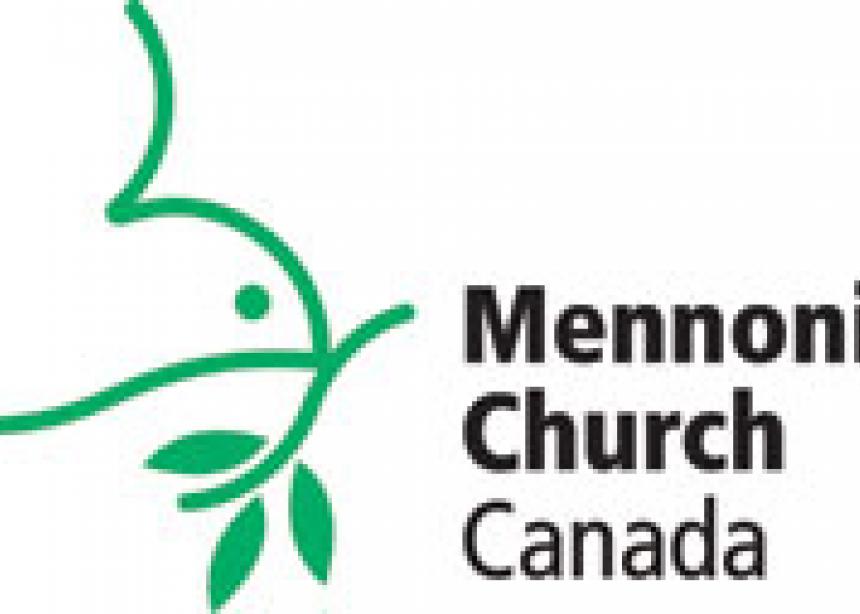Path # 7 Holy Spirit and interpretive community
By Robert J. Suderman, Being a Faithful Church Task Force member
“It is the Holy Spirit who guides the interpretive community in faithfulness, and in faithfully understanding Scripture for our lives. This means that we must continually open our hearts and minds to the work of the Spirit within and among us. Without this, “the text is just black marks on the paper.”
I’m glad the congregational responses to our invitation for feedback on the BFC process identified the work of the Spirit in the hermeneutic community as an important key to using the Bible well.
As General Secretary of Mennonite Church Canada in 2006, I led the God’s People Now tour during which I personally visited virtually every one of the 225 congregations across Mennonite Church Canada. One congregation pushed the question of where “hermeneutical authority” lies in MC Canada. This congregation had recently revamped its leadership structure so that the pastor was the authority for biblical interpretation in the community, and the role of the community was to obey the discernment of the pastor. I responded by saying that our understanding is that there are three essential ingredients to interpretive authority:
- Scripture is open before us;
- A reading and interpreting community gathered around open Scripture with the gifts that the Spirit has given it;
- The Holy Spirit guiding our discernment.
This response generated much dis-ease in that congregation. They responded by saying that if interpretive authority cannot be focused in one person, effectively it means that “there is no authority at all.”
Path #7 reiterates an understanding of the authority of the Spirit-guided community in scriptural discernment. The Confession of Faith in a Mennonite Perspective underlines this perspective. It states: “The Bible is the essential book of the church. Through the Bible, the Holy Spirit nurtures the obedience of faith to Jesus Christ and guides the church in shaping its teaching, witnessing, and worship. . . . We participate in the church’s task of interpreting the Bible and of discerning what God is saying in our time by examining all things in the light of Scripture. Insights and understandings which we bring to the interpretation of the Scripture are to be tested in the faith community.”
While some Christian groups may prefer to give more authority either to a Pope, a Presbytery, the Clergy, a Learned Seminary, or the Elders, this path suggests that we need to look to the discerning wisdom of the gathered community under the guidance of the Holy Spirit.
Path # 11: Interpretative community is cross-cultural
By Laura Loewen, Being a Faithful Church Task Force member
“We need to see our interpretive community as larger than the people we can see around us. The hiking trail we are on has already been forged by many who have gone before us. They have left markers on the trail to help those who come after . . . [T]he interpretive community extends geographically beyond those in our hiking group; it is not restricted to our hiking group; it is not restricted to our choice of time and schedule; and it is not constrained by our particular agenda. We must affirm the critical importance of those on the trail with us at this time, those who have gone before, and those who are hiking at the same time, but on trails that may be geographically and culturally distant from us.”
This path teaches us that there are others on our hike who interpret Scripture very differently from how we might.
One of the most passionate cross-cultural debates in our Scriptures is found in Acts 15. For a people who had been commanded that male circumcision was a non-negotiable sign of one’s commitment and obedience to God (Gen. 17:10, Exodus 12: 43f; Joshua 5;), and who had obeyed that commandment for centuries, it was unthinkable that the law of Moses could be broken. Salvation came through obedience to the law (Acts 15:1). After considerable debate among the apostles and elders, Peter acknowledged to those gathered that God’s Spirit was at work in the lives of the new folks on the hiking trail, the gentiles, and that circumcision was not central to salvation. God’s act of salvation was an act of grace, and it extended beyond the Jewish race.
The example of slavery is an illustration of a discussion that took centuries to bring us to where we are today in our interpretation. We have abolished slavery, and in those instances where child slavery or the enslavement of women for the benefit of the sex trade takes place, we believe that a terrible wrong has occurred. In our scriptures, slaves are told to obey their masters with enthusiasm as though obeying Christ (Eph. 6:5-9, Col. 3:22-25, Titus 2:9-10, 1 Peter 2:18 – 19).
There are other Biblical texts that support the practice of slavery. And yet, there are also texts which suggest that as followers of Jesus, slaves were to be treated more as brothers and sisters than as property one owned (Philemon 1:8f). In the letter to the Galatians, Paul writes that all believers are children of God. There is no differentiation between Jew or Greek, male or female, slave or free (Gal. 3:25-29). While Paul’s context can be seen as maintaining the status quo regarding slavery, we also note that a shift in the relationship between owner and slave is beginning to emerge. As Anabaptists, the life and teachings of Jesus are central in our discernment and therefore the commandment “In everything do to others as you would have them do to you . . .” (Matt. 7:12) already suggests a world view where there is no master/slave relationship.
--Posted Nov. 21, 2012
Others in the series:
Part 1- Being a faithful church: The paths and ditches of biblical interpretation (Oct. 15, 2012 issue)
Part 2- The paths and ditches of biblical interpretation (Oct. 29, 2012 issue)
Part 3- The paths and ditches of biblical interpretation (Nov. 12, 2012 issue)
Part 5- The paths and ditches of biblical interpretation (Dec. 17, 2012)
Part 6- The paths and ditches of biblical interpretation (Jan. 7, 20, 2013)



Add new comment
Canadian Mennonite invites comments and encourages constructive discussion about our content. Actual full names (first and last) are required. Comments are moderated and may be edited. They will not appear online until approved and will be posted during business hours. Some comments may be reproduced in print.